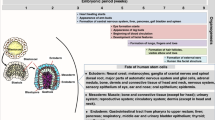Abstract
THE chick embryo is capable of developing hypersensitivity of the immediate type (anaphylaxis) to foreign proteins during most of its developmental life1,2. It has also been demonstrated that, from the 12th day of incubation, sensitization of the delayed type to transplantation antigens can be elicited by injection of whole blood3. Due to the fact that chick embryos also are susceptible to immunological suppression and are not capable of humoral antibody production4,5, a new interpretation was needed to account for such distinctive immunological properties of the chick embryo. In proposing such a theory it was postulated that, during development of the embryo, tissue-bound antibodies can be elaborated by cells derived from inactive mesenchymal precursor cells. Such tissue-bound antibodies, in common with classical antibodies, have anaphylactogenic properties1. It was assumed that chicks, sensitized as embryos, would be capable of manifesting hypersensitive reactions for only a short time after hatching. This was based on a common observation that chick embryos and young animals injected with antigen do not manifest anaphylaxis when tested one month or more after the initial injection4,6. The term hapto-antibody was suggested for these tissue-bound embryonic antibodies which manifest this anaphylactic property.
This is a preview of subscription content, access via your institution
Access options
Subscribe to this journal
Receive 51 print issues and online access
$199.00 per year
only $3.90 per issue
Buy this article
- Purchase on Springer Link
- Instant access to full article PDF
Prices may be subject to local taxes which are calculated during checkout
Similar content being viewed by others
References
Van Alten, P. J., and Schechtman, A. M., J. Exp. Zool., 153, 187 (1963).
Engelhandt, G., and Lendle, L., Arch. Exp. Path. Pharmakol., 225, 402 (1955).
Solomon, J. B., Nature, 198, 1171 (1963).
Hirata, A. A., and Schechtman, A. M., J. Immunol., 85, 230 (1960).
Wolfe, H. R., and Dilkes, E., J. Immunol., 58, 245 (1948).
Schechtman, A. M., Terasaki, P. Z., Timourian, H., Bold, E. J., and Longmire, W. P., in Mechanisms of Immunological Tolerance, 285 (Czechoslovak. Acad. Sci., 1962).
Le Comte, J., and Beaumariage, M. L., Intern. Arch. Allergy, 13, 145 (1958).
Author information
Authors and Affiliations
Rights and permissions
About this article
Cite this article
VAN ALTEN, P. Duration of Embryonic Hypersensitivity and its Relation to the Level of Differentiation of the Chick. Nature 204, 797–798 (1964). https://doi.org/10.1038/204797a0
Issue Date:
DOI: https://doi.org/10.1038/204797a0
Comments
By submitting a comment you agree to abide by our Terms and Community Guidelines. If you find something abusive or that does not comply with our terms or guidelines please flag it as inappropriate.



